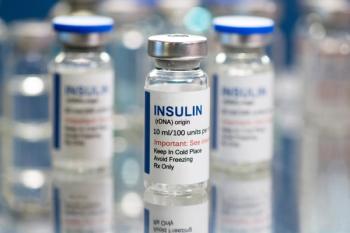
Overweight Boys Who Lose Weight Before Adulthood Reduce Type 2 Diabetes Risk
Boys who are overweight during childhood can normalize their weight as young adults to avoid diabetes.
Males who were overweight in childhood, but who lost the weight by young adulthood had a similar risk of developing type 2 diabetes (T2D) as young adults who were not obese as children, according to a study presented at the
“These findings suggest that adverse metabolic health consequences of being overweight in childhood may possibly be reversed,” lead study author Lise G. Bjerregaard, PhD, Department of Clinical Epidemiology, Frederiksberg Hospital, Copenhagen, Denmark, said in a press release about the study. “We expected that overweight boys who reach normal weight by age 18 could reduce their risk of developing type 2 diabetes. However, we were excited to discover that achieving normal weight by young adulthood resulted in the same risk level as men who had always been of normal weight.”
The study analyzed the association between patterns defined as the combination of weight status in childhood and young adulthood and the development of T2D later in life. The authors sought to determine whether overweight male children who normalize their weight between the ages of 7 and 18 years can reverse the negative impact of being overweight during adolescence, since being overweight in childhood and young adulthood increases the risk of developing T2D later in life.
The researchers classified being overweight based on the CDC's guidelines for childhood obesity and the World Health Organization’s Body Mass Index classifications for young adulthood. The authors evaluated data from 62,565 men in Denmark who had their weight and height measured at age 7 and again between the ages 17 and 26. They found that 5.4% of men were overweight in childhood and 8.2% were overweight in young adulthood; however, 40% of men who were overweight in childhood were also overweight in young adulthood.
By age 30, the study showed that 6710 men developed T2D, but those who normalized their weight by the time they reached young adulthood had a similar risk of T2D compared with men who were never overweight (HR = 1.01 [0.87-1.16]). The authors expressed concern that men who were persistently overweight or who became overweight as young adults had triple the risk of developing T2D compared with non-overweight men who were overweight as children (HR = 2.88 [2.40, 3.44]) and (HR = 2.95 [2.53, 3.45]), respectively.
“Our results highlight the need for normalizing weight among overweight children before they reach adulthood,” Bjerregaard said. “Prevention and treatment interventions of overweight pediatric populations should be a priority in many countries around the world, especially where there are higher incidences of obese children and rising rates of type 2 diabetes.”
Reference
Bjerrengaard LG, et al. Are Adverse Effects of Child Overweight on Risk of Type 2 Diabetes Reversible by Remission to Normal Weight in Young Adulthood? Presented at: The American Diabetes Association’s 77th Scientific Sessions, June 9-13, 2017. San Diego.
Newsletter
Stay informed on drug updates, treatment guidelines, and pharmacy practice trends—subscribe to Pharmacy Times for weekly clinical insights.













































































































































































































